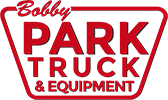Information Request
Need more information about one of our vehicles? Simply fill in the form below and we'll be in touch.
Rather Make a Phone Call?
(205) 759-4891We will be happy to meet your needs.
How To Check Hydraulic Fluid Level On Toyota Forklift?

When To Check If The Hydraulic Fluid Level On Your Toyota Forklift Is Low?
-
Slow Operation
If you observe a noticeable decline in your forklift's performance, that's a clear indication. As hydraulic fluid is essential to the machine's smooth and effective operation, any decrease in speed can be attributed to insufficient fluid.
-
Abnormal Noise
Numerous natural factors can have an impact on your hydraulic systems. For example, aeration occurs when air contaminates hydraulic fluid. This will also affect the hydraulic fluid, increasing the fluid's deterioration. Therefore, the first thing you should do if you hear a banging or knocking sound while the forklifts are operating is to ensure adequate hydraulic fluid is in your Toyota forklift.
-
High Fluid Temperature
There are several reasons why a fluid can get too hot. Temperatures above 180 degrees will cause the fluid to deteriorate more quickly and harm the seals simultaneously. This can harm the machine by causing the liquid to evaporate quickly. Therefore, it's a good idea to examine the hydraulic fluid level in your Toyota forklift if you start to detect a high fluid temperature.
5 Steps To Check The Hydraulic Fluid Level
You can now determine when a forklift's fluid level needs to be checked based on factors including performance, unusual noise, and excessive liquid temperature. This step-by-step instruction explains how to properly check the hydraulic fluid level in your forklift before you get it from a professional forklift truck dealer company like Truck Forklifts.
1. Gather Your Dipstick
For different forklift models, most original equipment managers utilize the same dipstick. For example, cushion and pneumatic tire forklifts frequently use the same dipstick. Simply utilize the side of the dipstick labeled C1, C2, or C3 when using cushion forklifts. As an alternative, pneumatic forklifts should utilize the side designated with P1, P2, and P3. To find out which mark to use, we advise you to thoroughly review your operator manual or speak with a forklift specialist.
2. Park On A Ground Level
Before monitoring the fluid level, ensuring the forklift is not parked on uneven or uphill terrain is crucial. It must be grounded on a flat surface to ensure best checking.
3. Keep Your Forks In A Standard Position
The next step is to lower the forks to the ground and ensure they don't tip forward or backward. A reading that is off will occur because part of the fluid stays in the lift cylinders when tilted or raised.
4. Pull The Dipstick To Check The Fluid Level
Take out the dipstick, wipe it quickly, and put it back in. Pull it out once again to compare the fluid level to the indications. Make sure the dipstick is firmly placed again.
5. Use The Fluid Recommended By The Manufacturer
All that's left to do is apply the suggested fluid to guarantee a seamless and effective operation. Then, check for any leakage, and you have successfully matched the hydraulic level on your Toyota forklift. To find out how your hydraulic fluid is doing, we advise you to proactively monitor the forklift's performance speed, noise level, and fluid temperature. Do periodic fluid checks, forklift inspections, and filter changes to ensure your forklift operates at peak efficiency.
Conclusion
With this quick guide on how to check the hydraulic fluid level in your forklift, you can efficiently make your forklift operations run smoothly. By looking for signs like slow operation, unusual noise, and high fluid temperature, you can take further steps to fill in the energy booster of your forklift. If you are considering getting a forklift for your business, contact us at Truck Forklifts. We are experts at meeting your transportation and trucking needs with premium warehouse and lift trucks.
Frequently Asked Questions
Where is the hydraulic reservoir on a forklift?
Usually, the hydraulic fill is located beneath the hood on the right side of the lift. A fill tube with a breather cover and a dipstick are used to check the oil level.
How are hydraulics used in forklifts?
Pressurized fluid is used in forklift hydraulics to create motion. A reservoir tank that supplies the hydraulic pump with fluid is used to store hydraulic fluid. The pump forces the hydraulic fluid through a control valve and into the lift cylinders via a network of hoses.
What kind of hydraulic fluid does a forklift use?
Forklift hydraulic fluids come in various forms and viscosity types, including water-based, oil-based, and synthetic. The type of forklift and its intended usage will determine which hydraulic fluid is appropriate for lift action. Synthetic fluid, for instance, aids in controlling temperature in both warm and cold settings.

